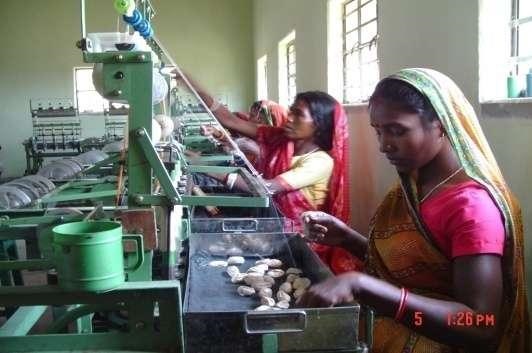|
India is a rapidly growing economy and there are significant opportunities for new businesses. Micro, small and medium enterprises are regarded as the backbone of the Indian economy, accounting for nearly 30 per cent of the country’s GDP in 2020.1 However, only 11 per cent of jobs are created by micro-enterprises.2 There is an opportunity to catalyse job creation and provide inclusive growth within communities by promoting, sustaining, and accelerating micro enterprises that also have a significant impact on the environment. Over the decades, the government has undertaken various development initiatives aimed at empowering communities and creating jobs. However, most of these development plans have been carried out unilaterally by the government and met with limited success. Additionally, the government in the recent decades has also been implementing development models along the public–private partnership (PPP) framework. The sharp criticism of such welfare initiatives, schemes, and models would be that most of them are linear, top–down, and do not align with aspirations and strengths of entrepreneurs and the communities.3 However, the success of such development models and solutions is determined by the magnitude of synergies that can be achieved by the three development actors, viz., the public sector, the private sector, and, equally important but most critical – the communities and civil society. The Public–Private–Community Partnership approach The Development Alternatives (DA) Group has been using a public–private–community partnership (PPCP) approach to empower rural and marginalised communities, and create jobs through micro-entrepreneurship. The Indian Micro Enterprises Development Foundation, a special purpose vehicle of the DA Group, has developed diverse clusters all across India under the Scheme of Fund for Regeneration of Traditional Industries (SFURTI), an initiative of the Ministry of Micro, Small and Medium Enterprises, to promote cluster development. SFURTI clusters exemplify the contribution of all the three key actors – public, private, and community – to create centres of economic development for rural communities. These centres ensure enhanced livelihoods in a market-driven approach supported by both public and private stakeholders.
Women artisans at work in the Jungle Mahal
Tasar
Home furnishing products produced in the cluster
Consider the
example of the Jungle Mahal Tasar Silk Cluster in Jhargram
district of West Bengal. It is run by a Community Trust, and 997 women
from local tribal communities produce reel yarn, spun yarn, tasar silk
fabric, and various products in it. Under the SFURTI scheme, the
Ministry of MSME has provided the cluster a core grant of INR 456.89
lakh, and facilitated the setting up of a common facility centre,
spinning machines, and cocoon banks. References 1Ministry of Micro, Small and Medium Enterprises. 2021. Contribution of MSMEs to GDP. Last accessed on 20 May, 2022 at https://www.pib.gov.in/PressReleasePage.aspx?PRID=1744032 2Ministry of Statistics and Programme Implementation. 2013. Sixth Economic Census Report. Last accessed on 20 May, 2022 at http://mospi.nic.in/all-india-report-sixth-economic-census 3Satar, M. S. 2016. A policy framework for social entrepreneurship in India. Department of Management Jamia Hamdard University, New Delhi, India. IOSR Journal of Business and Management 18(9): 30–43
Sudhir Sah
Col. Raman Thapar
|

